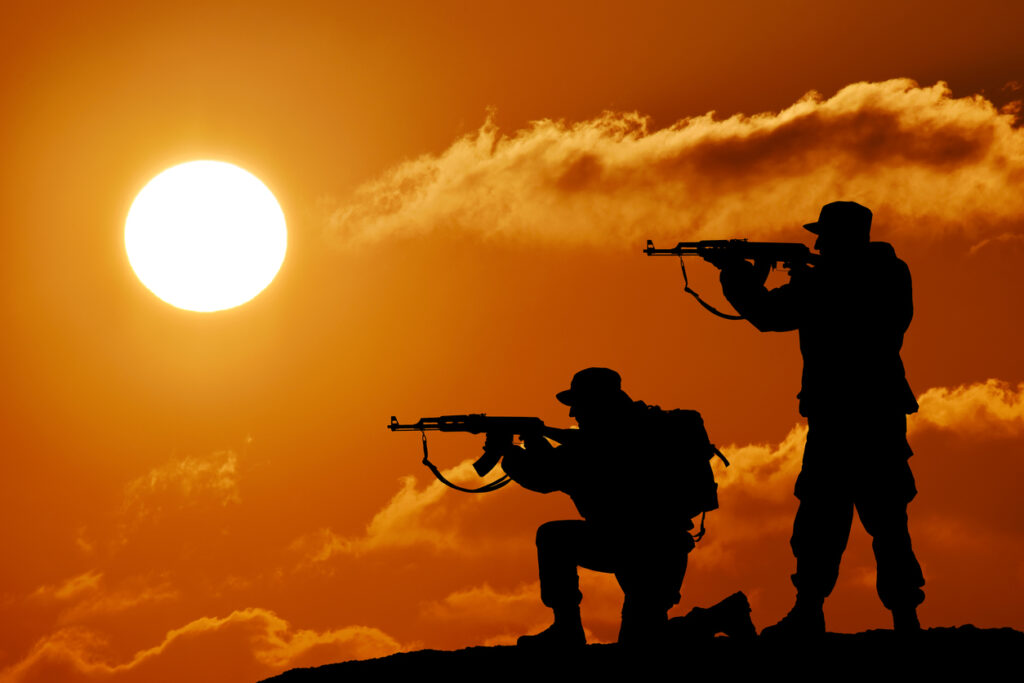People often find it hard to reconcile the different aspects of my life. On one hand, I am a dedicated spiritual seeker, having delved into meditation at a Zen monastery in Japan, become a yoga teacher, and explored mind-body medicine under the guidance of esteemed healers from around the globe. On the other hand, I bear the scars of four combat deployments to Iraq as a US Marine corpsman, providing medical aid in the field of battle.
 Upon leaving the military, I was diagnosed with PTSD. Grappling with a sense of hopelessness, I embarked on a quest to uncover the most effective techniques for soothing the mental and physical anguish plaguing me.
Upon leaving the military, I was diagnosed with PTSD. Grappling with a sense of hopelessness, I embarked on a quest to uncover the most effective techniques for soothing the mental and physical anguish plaguing me.
My initial deployment with a US Marine recon battalion, akin to Special Forces, led me to the second battle of Fallujah in November 2004. It was a grueling assault on a city that would go down in history as one of the most intense urban combat experiences for US forces since Hue City in Vietnam.
Each of us who served there carries haunting images we must learn to coexist with. For me, the first such image was witnessing the loss of a fellow serviceman while attempting to disarm an improvised explosive device (IED)—one of those treacherous homemade bombs Iraqi insurgents planted in fields and on roadsides.
In my case, I resorted to numbing the pain of that image with the painkillers available to medics like myself. Additionally, I adopted the belief that I was already dead, repeatedly reminding myself that nothing that happened to me would matter because I had already died.
When I received an honorable discharge from the military in 2008, I was taken aback by my survival. I had anticipated an overwhelming sense of relief upon being released from the possibility of future deployments, but that relief eluded me.
I roamed the streets of American cities, haunted by the same anxiety and fear that had plagued me day in and day out in Iraq. Alcohol and drugs, including prescriptions like clonazepam from well-meaning VA psychiatrists, became crutches on which I leaned heavily. Unfortunately, these drugs were highly addictive and led me down a path of increasingly risky behaviors.
Realizing I needed to seize control of my own healing journey, I resolved to learn meditation from an authentic Asian master. Traveling to Japan, I underwent training at Sogenji, a traditional Zen monastery in the city of Okayama. However, spending hours in the half-lotus position triggered memories of the stress-inducing positions we enforced during interrogations in the aftermath of waterboarding becoming forbidden.
 My deep gratitude goes to Shodo Harada-Roshi, a true contemporary Zen master, for facilitating the transformative experience that occurred there for me. Upon leaving the monastery, however, I was concerned about being able to maintain that level of meditation on my own. I needed more accessible and efficient methods, as well as a deeper understanding of the mind-body connection in order to fully integrate meditative practices into my life on a daily basis.
My deep gratitude goes to Shodo Harada-Roshi, a true contemporary Zen master, for facilitating the transformative experience that occurred there for me. Upon leaving the monastery, however, I was concerned about being able to maintain that level of meditation on my own. I needed more accessible and efficient methods, as well as a deeper understanding of the mind-body connection in order to fully integrate meditative practices into my life on a daily basis.
It was a remarkable moment when I stumbled upon Dawson Church’s work while conducting research on the Internet. Church had already crafted a program he called EcoMeditation, a “meditation of meditations.”
My curiosity piqued, I visited his website and followed the steps outlined there. To my astonishment, within a mere two minutes, I activated profound healing resources and entered a state of deep relaxation and well-being that had previously taken me hours, if not days and weeks, to achieve through meditation.




